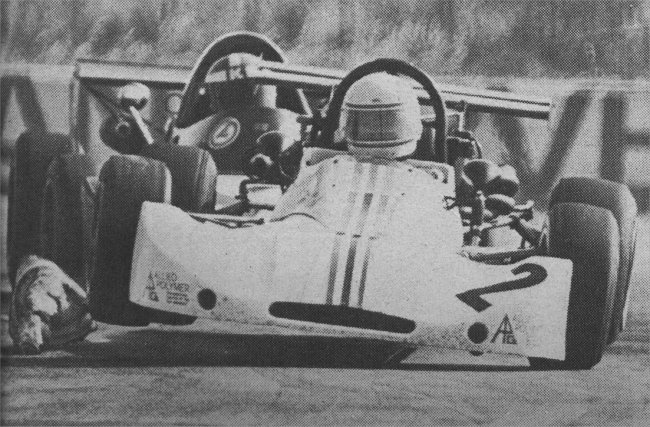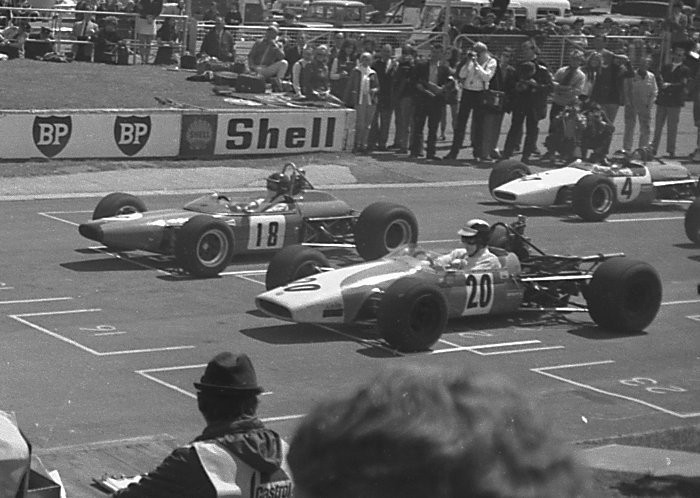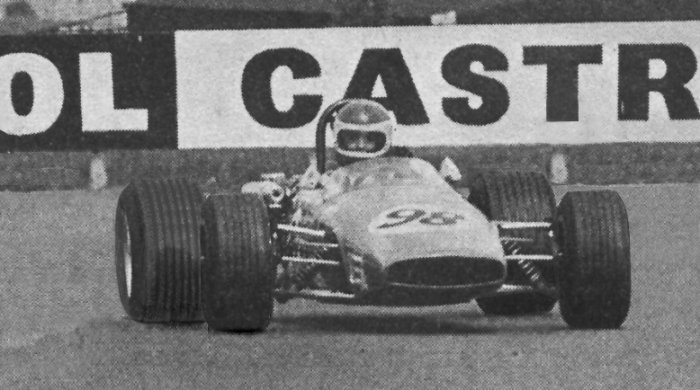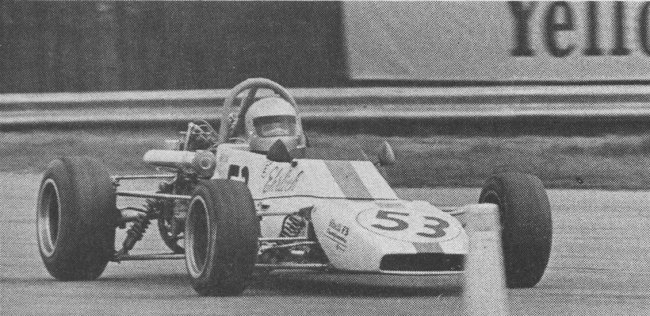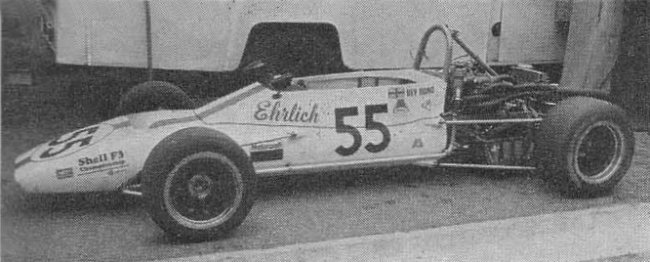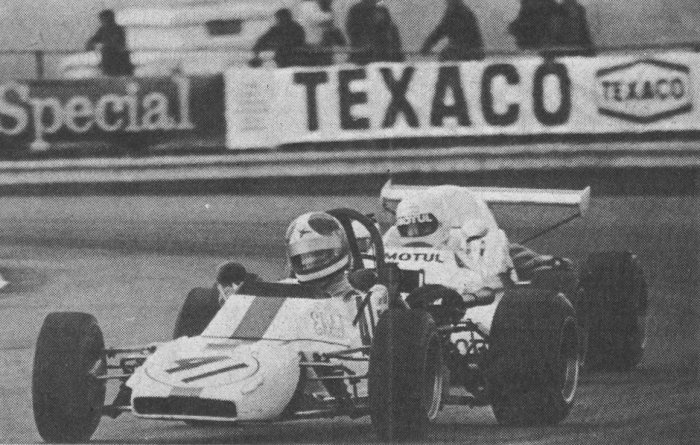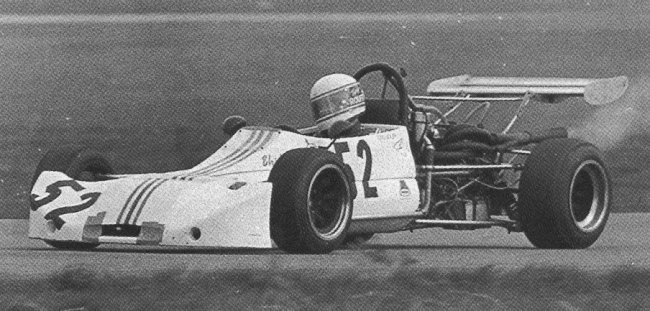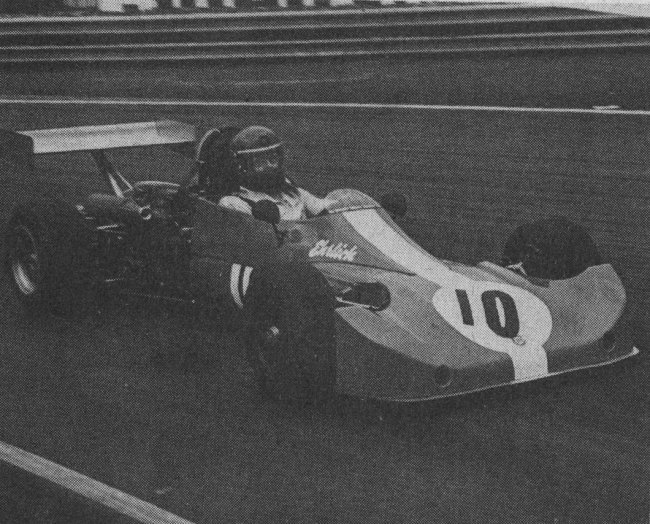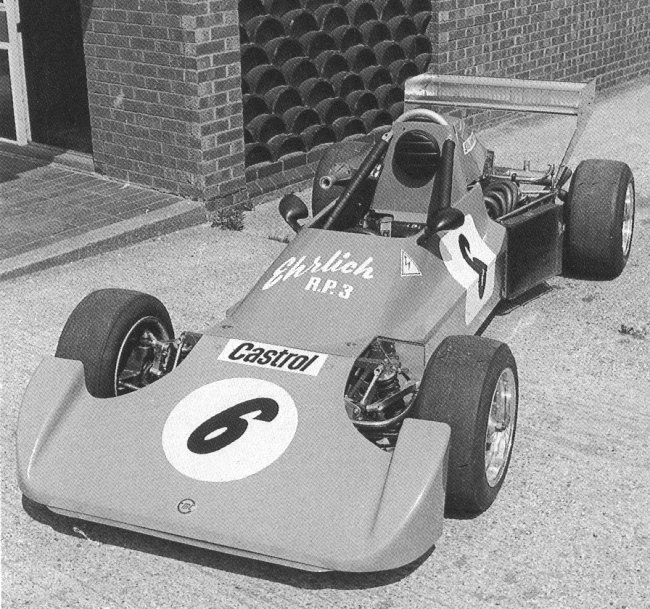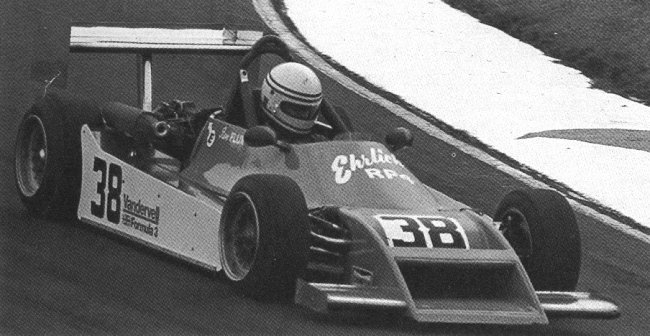Ehrlich/Emc
Born in Vienna, Dr Joseph Ehrlich came to England in the 1930s where he made a name for himself with his work on motorcycle engines and the EMC motorcycle which Mike Hailwood took to third place in the 1961 world series. After working as a consultant for BMC Dr Ehrlich set up his own company in 1958 doing work for other constructors as well as work on his own projects which included producing a number of karts.
The first F3 car appeared in 1969 and for the next ten years or so a series of F3 and F Atlantic cars appeared which met with varying degrees of success. In the early 80s Dr Ehrlich returned to his first love, motorcycles and kart engines where he had a great deal of success including winning four Junior TTs. Sadly, in September 2003, Dr Ehrlich passed away.
1968
The first F3 car was entered as an EMC and was designed by Mike Keele, it was influenced both by the karts the team had experience with and the contemporary Brabham. It was fitted with Brabham BT21 bodywork and went reasonably well on occasions.
1969
A new car was introduced for 1969 and was quite heavily influenced by the F2 Brabham BT23, it ran well early in the season scoring a third at Mallory Park but difficulties within the team saw its withdrawal part way through the season.
1970
The EMC was entered for at least one race in 1970, Heat 1 of the Forward Trust round at Cadwell Park on the 19th of July, but it seems the car was a no-show. Dr Ehrlich also entered noted sportscar driver Roger Enever in a Brabham-EMC BT21 in Heat 2 of the same meeting but again this would seem to be a DNA.
1971
The 1971 Ehrlich was in fact the 1969 Brabham BT23 based chassis, resurrected and equipped with a 1600cc engine, it would have a brief season. Designated the EMC 606 Jody Scheckter did a handful of races with best results of a heat win at Silverstone and a 4th at Mallory Park. Scheckter deciding the grass was greener elsewhere finished off the season with Merlyn.
1972
Reverting to the Ehrlich name a new chassis was introduced for 1972, the ES1. Unusually in the days of almost universal aluminium tubs this was equipped with a steel monocoque. Unfortunately down on power engines and indifferent handling meant Bev Bond had a difficult season.
1973
For 1973 the ES2 was introduced, in appearance it was very much like the ES1 as the pictures show and the same handling and engine problems were evident, despite this Derek Lawrence managed a 5th and 6th place in British Championship races. A young Danny Sullivan made his F3 debut with a handful of races in the car.
1974
Derek Lawrence raced the Ehrlich ES2 regularly during 1974 and once a Vegantune engine was installed the car ran well on a number of occasions finishing in the top 6 several times including a third at Oulton Park in August. Of course it must be remembered that this was the first year of the 2-litre formula and, in the UK at least, fields were generally small without a great deal of quality at the back. The car was sometimes shown as an ES2/3 in the results although what modifications were made is not clear.
1975
An uprated chassis still using the steel monocoque was introduced for 1975 with the introduction of the ES5. A Ford-Vegantune engine was added and Tony Rouff managed some reasonable results with a best of 4th at Aintree and 5th at Silverstone being the highlights. Unfortunately Dr Ehrlich was distracted by purchasing the 1972 F3 Lotus 73s which only ran in one race, perhaps more concentration on the ES5 would have produced better results.
1976
For the beginning of 1975 the ES5 was used again although it was sometimes referred to as ES5/2. Later in the season the car was updated again to ES6 specification, and was apparently entered as ES5/6. Results were becoming harder to achieve but Thruxton seemed a happy hunting ground with two 5ths and a 6th shared between the three drivers.
1977
Perhaps the best looking Ehrlich, the RP3 was designed by Graham Humphries and built by Sabre Automotive. It reverted to a conventional aluminium monocoque with a standard suspension design and was powered by a Novamotor Toyota. Driver Pierre Dieudonne’s best result was a 5th place in a non-championship race at Mallory.
1978
A revised version of the RP3 employing a narrow nose, the RP4 was used in 1978 with best finishes for Brett Riley of 6th, twice at Brands and once at Mallory.
1979
Once again the RP4 was used reverting to a full-width nose again but no top 10 finishes were recorded.
1980
For the last year in F3 the RP4 was fitted with a narrow nose and sidepods from the Formula Atlantic RP5. The final race was the at F3 British GP event when Ian Flux finished 10th, the car was converted into a Formula Atlantic RP5 and was written off in an accident at Brands Hatch.
Drivers
1968 Roger Keele.
1969 Roger Keele.
1971 Ian Ashley, Jody Scheckter.
1972 Bev Bond.
1973 Derek Lawrence, Danny Sullivan.
1974 Derek Lawrence, Chris Smith.
1975 Tony Rouff.
1976 Pierre Dieudonne, Richard Hawkins, Oscar Notz, Mike Tyrrell.
1977 Pierre Dieudonne.
1978 Brett Riley.
1979 Bryce Wilson.
1980 Ian Flux.
